Andrew Blake
MAGIC: Modular Auto-encoder for Generalisable Model Inversion with Bias Corrections
May 29, 2024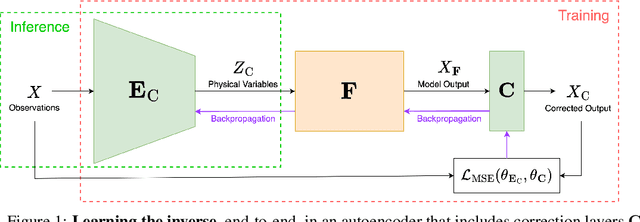


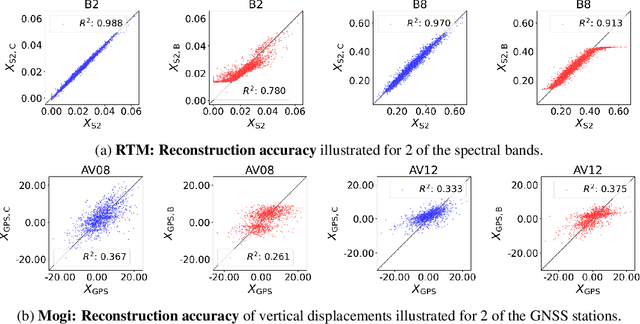
Abstract:Scientists often model physical processes to understand the natural world and uncover the causation behind observations. Due to unavoidable simplification, discrepancies often arise between model predictions and actual observations, in the form of systematic biases, whose impact varies with model completeness. Classical model inversion methods such as Bayesian inference or regressive neural networks tend either to overlook biases or make assumptions about their nature during data preprocessing, potentially leading to implausible results. Inspired by recent work in inverse graphics, we replace the decoder stage of a standard autoencoder with a physical model followed by a bias-correction layer. This generalisable approach simultaneously inverts the model and corrects its biases in an end-to-end manner without making strong assumptions about the nature of the biases. We demonstrate the effectiveness of our approach using two physical models from disparate domains: a complex radiative transfer model from remote sensing; and a volcanic deformation model from geodesy. Our method matches or surpasses results from classical approaches without requiring biases to be explicitly filtered out, suggesting an effective pathway for understanding the causation of various physical processes.
From Spectra to Biophysical Insights: End-to-End Learning with a Biased Radiative Transfer Model
Mar 05, 2024



Abstract:Advances in machine learning have boosted the use of Earth observation data for climate change research. Yet, the interpretability of machine-learned representations remains a challenge, particularly in understanding forests' biophysical reactions to climate change. Traditional methods in remote sensing that invert radiative transfer models (RTMs) to retrieve biophysical variables from spectral data often fail to account for biases inherent in the RTM, especially for complex forests. We propose to integrate RTMs into an auto-encoder architecture, creating an end-to-end learning approach. Our method not only corrects biases in RTMs but also outperforms traditional techniques for variable retrieval like neural network regression. Furthermore, our framework has potential generally for inverting biased physical models. The code is available on https://github.com/yihshe/ai-refined-rtm.git.
Imagining the Unseen: Learning a Distribution over Incomplete Images with Dense Latent Trees
Aug 14, 2018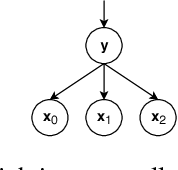

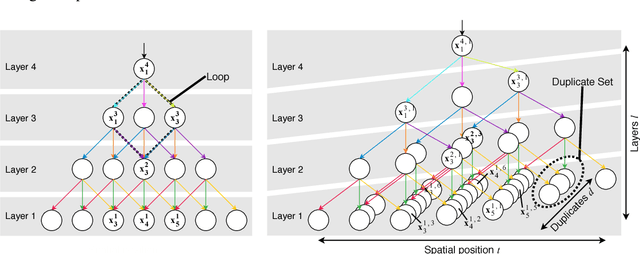
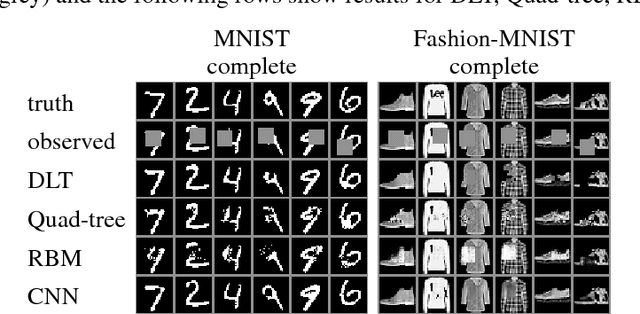
Abstract:Images are composed as a hierarchy of object parts. We use this insight to create a generative graphical model that defines a hierarchical distribution over image parts. Typically, this leads to intractable inference due to loops in the graph. We propose an alternative model structure, the Dense Latent Tree (DLT), which avoids loops and allows for efficient exact inference, while maintaining a dense connectivity between parts of the hierarchy. The usefulness of DLTs is shown for the example task of image completion on partially observed MNIST and Fashion-MNIST data. We verify having successfully learned a hierarchical model of images by visualising its latent states.
Efficient Computation of Collision Probabilities for Safe Motion Planning
Apr 15, 2018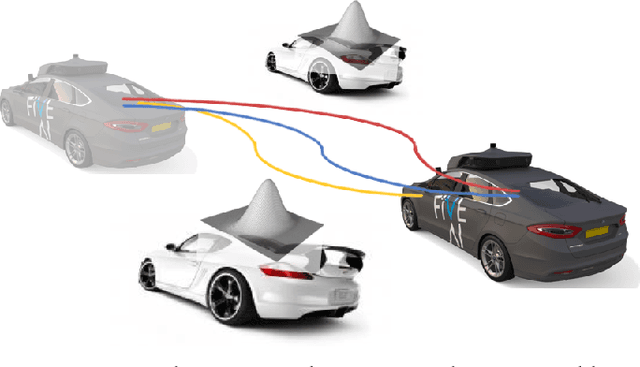

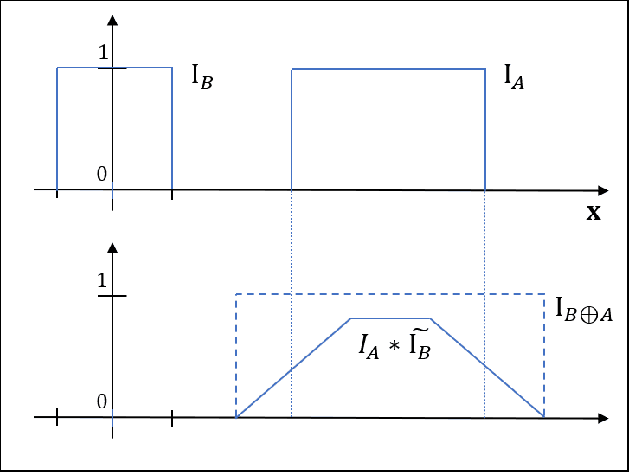
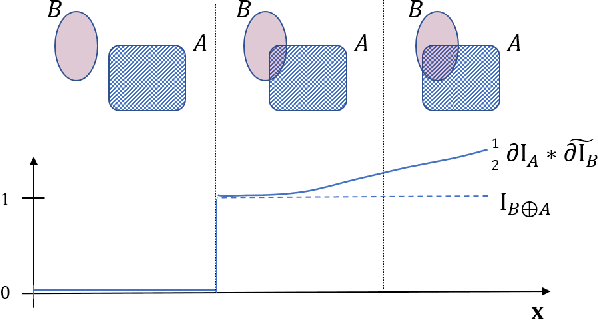
Abstract:We address the problem of safe motion planning. As mobile robots and autonomous vehicles become increasingly more prevalent in human-centered environments, the need to ensure safety in the sense of guaranteed collision free behaviour has taken renewed urgency. Achieving this when perceptual modules provide only noisy estimates of objects in the environment requires new approaches. Working within a probabilistic framework for describing the environment, we present methods for efficiently calculating a probabilistic risk of collision for a candidate path. This may be used to stratify a set of candidate trajectories by levels of a safety threshold. Given such a stratification, based on user-defined thresholds, motion synthesis techniques could optimise for secondary criteria with the assurance that a primary safety criterion is already being satisfied. A key contribution of this paper is the use of a `convolution trick' to factor the calculation of integrals providing bounds on collision risk, enabling an $O(1)$ computation even in cluttered and complex environments.
Bayesian Inference for NMR Spectroscopy with Applications to Chemical Quantification
Feb 24, 2014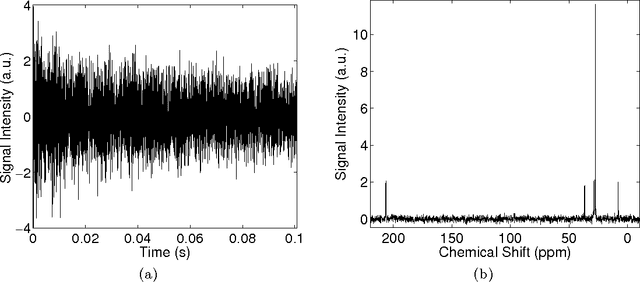

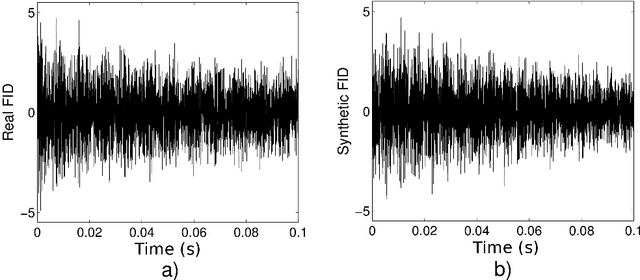

Abstract:Nuclear magnetic resonance (NMR) spectroscopy exploits the magnetic properties of atomic nuclei to discover the structure, reaction state and chemical environment of molecules. We propose a probabilistic generative model and inference procedures for NMR spectroscopy. Specifically, we use a weighted sum of trigonometric functions undergoing exponential decay to model free induction decay (FID) signals. We discuss the challenges in estimating the components of this general model -- amplitudes, phase shifts, frequencies, decay rates, and noise variances -- and offer practical solutions. We compare with conventional Fourier transform spectroscopy for estimating the relative concentrations of chemicals in a mixture, using synthetic and experimentally acquired FID signals. We find the proposed model is particularly robust to low signal to noise ratios (SNR), and overlapping peaks in the Fourier transform of the FID, enabling accurate predictions (e.g., 1% sensitivity at low SNR) which are not possible with conventional spectroscopy (5% sensitivity).
 Add to Chrome
Add to Chrome Add to Firefox
Add to Firefox Add to Edge
Add to Edge